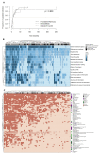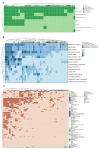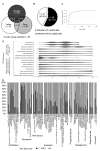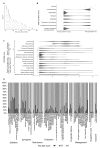Quality of Online Information on Multiple Myeloma Available for Laypersons
- PMID: 35877218
- PMCID: PMC9324394
- DOI: 10.3390/curroncol29070358
Quality of Online Information on Multiple Myeloma Available for Laypersons
Abstract
Online information can increase patients' competence and engagement. However, there are concerns regarding invalid information. Overall, 300 websites and 50 YouTube videos on multiple myeloma (MM) were evaluated. The websites did not differ between the search engines or search ranks. The median time since the last update was 9 months. The 63 unique websites showed a poor general quality (median JAMA score 2 of 4, only 18% with a valid HON certificate). The patient- (user-) focused quality was medium to poor (median sum DISCERN score 41 out of 80 points). The overall reading level was difficult requiring at least a 12th US school grade. The content level was low (median 24 out of 73 points). Sixteen percent contained misleading/wrong facts. Websites provided by foundation/advocacies showed a significantly higher general and patient- (user-) focused quality. For videos, the median time since upload was 18 months. Judged by the HON foundation score ~80% of videos showed a medium general quality. The patient- (user-) focused quality was medium to poor (median sum DISCERN score 43 points). The content level was very low (median 8 points). MM relevant websites and videos showed a medium to low general, patient- (user-) focused and content quality. Therefore, incorporation of quality indices and regular review is warranted.
Keywords: multiple myeloma; online health information; patient education.
Conflict of interest statement
The first author and all co-authors confirm that there are no potential conflicts of interest to disclose, except the following: Sandra Sauer: travel grants or honoraria for presentations for Celgene, BMS, Janssen, Takeda and Amgen; Karin Jordan: advisory board and/or honoraria for presentations for MSD, Amgen, Hexal, Riemser, Helsinn, Voluntis, Pfizer, Pomme-med, art-tempi, Astra Zeneca, Takeda, Mundipharma, and OnkoUpdate; Hartmut Goldschmidt: Grants and/or provision of Investigational Medicinal Product: Amgen, BMS, Celgene, Chugai, Dietmar-Hopp-Foundation, Janssen, Johns Hopkins University, Sanofi. Research Support: Amgen, BMS, Celgene, Chugai, Janssen, Incyte, Molecular Partners, Merck Sharp and Dohme (MSD), Sanofi, Mundipharma GmbH, Takeda, Novartis. Advisory Boards: Adaptive Biotechnology, Amgen, BMS, Celgene, Janssen, Sanofi, Takeda. Honoraria: Amgen, BMS, Celgene, Chugai, GlaxoSmithKline (GSK), Janssen, Novartis, Sanofi; Carsten Müller-Tidow: research support and support for clinical trials from multiple pharmaceutical companies; Katharina Kriegsmann: research support from BMS, Celgene, Sanofi.
Figures




Similar articles
-
Accuracy and Reliability of Internet Resources for Information on Monoclonal Gammopathy of Undetermined Significance-What Information Is out There for Our Patients?Cancers (Basel). 2021 Sep 7;13(18):4508. doi: 10.3390/cancers13184508. Cancers (Basel). 2021. PMID: 34572733 Free PMC article.
-
Osteotomy around the knee: Assessment of quality, content and readability of online information.Knee. 2021 Jan;28:139-150. doi: 10.1016/j.knee.2020.11.010. Epub 2020 Dec 23. Knee. 2021. PMID: 33360380
-
Online Patient Information on Domiciliary Oxygen Therapy: An Evaluation of Quality, Suitability, Reliability, Readability, and Content.Chest. 2022 Feb;161(2):483-491. doi: 10.1016/j.chest.2021.07.2171. Epub 2021 Aug 12. Chest. 2022. PMID: 34390709
-
Online Resources for Rotator Cuff Repair: What are Patients Reading?Arthrosc Sports Med Rehabil. 2019 Aug 3;1(1):e85-e92. doi: 10.1016/j.asmr.2019.06.002. eCollection 2019 Nov. Arthrosc Sports Med Rehabil. 2019. PMID: 32266344 Free PMC article. Review.
-
Separating the Wheat From the Chaff: An Evaluation of Readability, Quality, and Accuracy of Online Health Information for Treatment of Peyronie Disease.Urology. 2018 Aug;118:59-64. doi: 10.1016/j.urology.2018.02.054. Epub 2018 Apr 30. Urology. 2018. PMID: 29723588 Review.
Cited by
-
A Multistakeholder Qualitative Analysis of Barriers to Autologous Stem Cell Transplantation for Multiple Myeloma.Clin Lymphoma Myeloma Leuk. 2025 Jul 11:S2152-2650(25)00238-1. doi: 10.1016/j.clml.2025.07.002. Online ahead of print. Clin Lymphoma Myeloma Leuk. 2025. PMID: 40744761
-
A web-based knowledge database to provide evidence-based information to cancer patients: Utilization within the PIKKO study.Support Care Cancer. 2024 Jul 17;32(8):521. doi: 10.1007/s00520-024-08725-7. Support Care Cancer. 2024. PMID: 39017937 Free PMC article.
References
-
- Eutostat 53% of EU Citizens Sought Health Information Online. 2020. [(accessed on 15 May 2021)]. Available online: https://ec.europa.eu/eurostat/de/web/products-eurostat-news/-/ddn-202003....
-
- Iverson S.A., Howard K.B., Penney B.K. Impact of internet use on health-related behaviors and the patient-physician relationship: A survey-based study and review. J. Am. Osteopath. Assoc. 2008;108:699–711. - PubMed
MeSH terms
LinkOut - more resources
Full Text Sources
Medical

